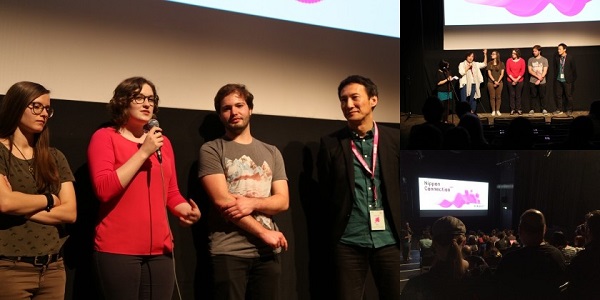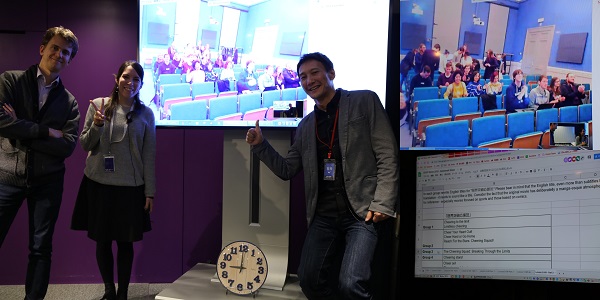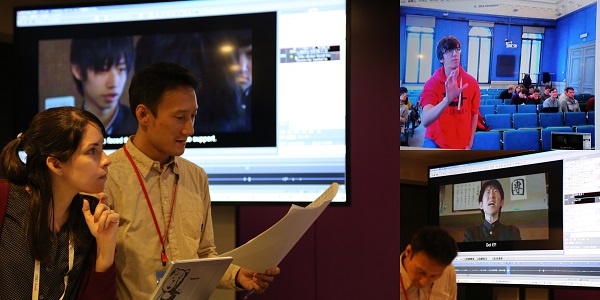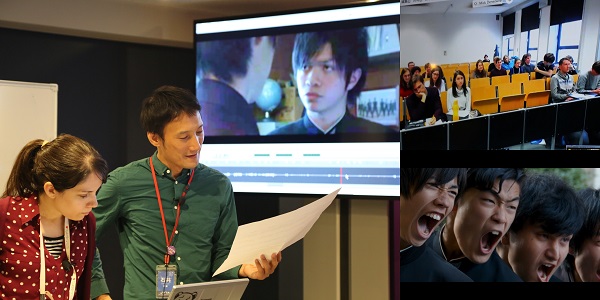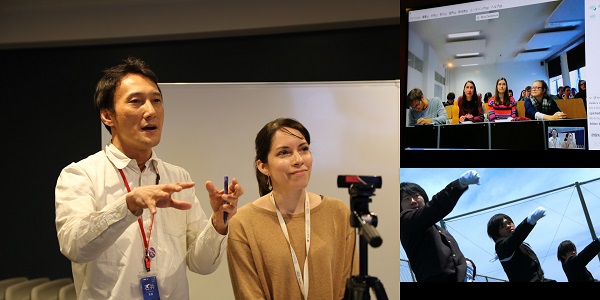海外大学字幕プロジェクトの第5弾ではゲント大学の学生たちが短編映画『限界突破応援団』の日英字幕翻訳に取り組みます。
教室に集結したおよそ30名の学生たちは、皆日本の映画やアニメ、テレビ番組が大好き。『七人の侍』や『ハウルの動く城』、『君の名は。』といった有名作品以外にも『カウボーイ・ビバップ』『銀魂』『テラスハウス』『ダウンタウンのガキの使いやあらへんで!』など、これまで国内で人気といわれてきた作品も「好きな日本の映像コンテンツ」として挙げられました。
映像翻訳の基本的な考え方を学ぶために、まずは日本のCM映像作品の翻訳に挑戦。ストーリー性のある短い映像の最後に流れる一言を訳す演習では、学生たちは4つのグループに分かれて意見を交換し、丁寧に言葉を選びながら訳を考えました。字幕として映像にのせてみると、映像に込められたメッセージがより伝わる翻訳が完成。学生たちは「映像翻訳とは何を目的としたスキルなのか」を早速つかみました。
続いて、日本のテレビドラマの会話を翻訳する演習へ。学生たちは同じグループでディスカッションを行い、キャラクターに合った言い回しを考えながら訳を作成。講師たちをうならせました。
言葉を丁寧に選べば、作品の世界観を存分に伝えられる映像翻訳。その醍醐味を味わった学生たちは、次回より課題作品の翻訳に着手します。
Students from Ghent University in Belgium will be translating a Japanese short film, Genkai Toppa Ouendan, for the Global Universities Subtitling Project over the course of five classes.
In this class of nearly 30 students, everyone said that they enjoy Japanese content such as films, anime and television shows. Students mentioned various titles, from famous ones such as Samurai 7, Howl’s Moving Castle andYour Name, to relatively lesser-known works such as Cowboy Bepop, Gintama, Terrace House and Downtown no Gaki no Tsukaiya Arahende!, showcasing their love for Japanese media of all types
To understand the basics of visual media translation, the students were first challenged to translate a Japanese commercial that had a story. They were divided into four groups, where they exchanged opinions about appropriate word choices for the translation of the last phrase in the commercial. Once the subtitles were put in, the original message in the visuals was clearly expressed as words on the screen. The students quickly learned what the main goals of visual media translation were through this exercise.
After that, they practiced translating a conversation from a Japanese television drama. In the same groups, they discussed the appropriate phrasing for the characters and translated the lines accordingly, winning praise from the instructors.
In visual media translation, selecting the right words allows one to fully express the message of the original work. After getting a taste of how fun media translation is, the students will be starting on their main subtitling project from the next class.

